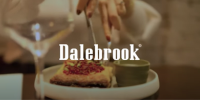The kitchen knife is one of the most important tools for any chef and there are many different kinds to choose from...

Choosing the perfect kitchen knife for your Kitchen can be difficult. The Kitchen knife is one of the most important tools for any chef and there are many different kinds to choose from. In our buyers guide, we hope to help you get to know your kitchen knives better and to help you choose which knife is right for your business.
Know your knife
 |
Getting to know your kitchen knives well is an essential task for every professional chef. There are many different kinds of knives to be found in a commercial kitchen and the various parts of each knife are integral to the weight, feel and function. Below we look at these parts and identify their uses. Take a look at the image to reference exactly where each part of a kitchen knife is.
|
Making Knives
The knife making process is as important as the final product. The quality of the materials used and the precision with which they are crafted are key for creating one of the most essential kitchen tools around. At Lockhart Catering, we stock kitchen knives from leading manufacturers, bringing you top quality knives at great prices. Below we look at the different stages to creating the perfect kitchen knife.
Stamping - Stamped blades, bolsters & tangs are cut directly out of cold steel, and then treated with a high heat to strengthen them. They are then polished and sharpened. This process is often the way economy knife ranges are made, and the lack of a bolster is sometimes a good signifier of a stamped knife.
Forging - Drop-forging a blade means to put an already-heated piece of stainless steel into a mould and stamping down on it whilst hot to give it increased strength and resistance. The blade is then tempered with more heat to create more hardness, and then polished and sharpened. Generally this process creates higher quality products, and can be noticed by a heavier and thicker feel to the blade, bolster and tang. Some knives may be made up of 3 separate grades of metal for each main part - the blade, bolster and tang, as some manufacturers feel that each area deserves a different material, this is always an important fact to check.
Handle - The traditional handle is formed from 2 parts (the scales), riveted onto a solid tang. Although be careful to note that some knives will have a handle completely formed from 1 piece of solid plastic, but this does not always mean low quality.
On that note, it pays to speak to the manufacturer about the processes involved in making any knife before purchasing. The higher quality the materials and processes involved in making the product, the longer your knife will last, and the sharper it will stay.
Styles of Knife
The 2 main styles of knife found in kitchens are Eastern and Western, both are a product of the different types of cuisine they are used for and both have very different looks and functions.
Eastern - Eastern-style kitchen knives are made from hard steel, with thinner blades. This means that they are generally lighter than their western counterparts and do not need to be sharpened as often, but when they are sharpened, they can be significantly more difficult to regain the edge. These style of knives are used for more delicate tasks, such as sushi preparation, where a lighter, sharper knife is ideal for intricate cutting and slicing.
Western - Western-style kitchen knives are usually made from a slightly softer steel than eastern knives, meaning they do not retain their cutting edge for as long, but are easier to sharpen and maintain. They usually have more weight and a thicker blade, bolster and tang to stand up to western cuisine's heavy-duty chopping.
Serrated or Smooth? - Serrated blades have a smaller point of contact on the cutting area than smooth blades, therefore exerting more force from each point onto the surface. This is an advantage when cutting items generally harder on the outside than the inside, such as cooked meats and fruits.
Due to the reduced point of contact when cutting, serrated blades usually require less periodic sharpening, but when they do blunt, they are more difficult to sharpen than a smooth blade.
Materials
The different types of material used in a knife can have a big impact on its function. There are 3 different steel types that are usually used when making Kitchen Knives.
- Titanium-Enhanced - This alloy allows for higher heat temperance, creating a much harder blade. But they are also more flexible than standard steel, so are great for filleting and other intricate tasks.
- High Carbon Stainless Steel - This is a very popular material for Kitchen Knives. The carbon creates a very hard blade, which will stay sharp for longer, and is easy to maintain. The stainless steel is made up from 18/10; 18 parts chromium and 10 parts nickel, which means the blade looks polished and clean as with most cutlery made from this material.
- High Carbon Steel - Very similar to the High Carbon Stainless Steel, this blade will maintain a sharp edge and is great for a wide variety of heavy and light duty tasks, the lack of stainless steel means that the aesthetics of the blade will dull and discolour over time, although this does not affect it's performance.
- Sharpening Steel - This is always a necessary investment, don't forget to invest in a good sharpening steel blade, to retain the sharp edges of your purchase, such as this sharpening steel blade from Global.
Types of Knife
- Cook's / Chef's Knife - This is the utility knife of the kitchen, used for a wide variety of tasks, it has a pointed blade and comes in a wide range of sizes, usually from 6 - 14 inches in length. It can be used for chopping, dicing, slicing, and many other every day kitchen tasks.
- Filleting Knife - This knife has to work with delicate filleting tasks, therefore it is usually a slim, flexible blade, making it perfect for removing skin or fillets.
- Turning Knife - This is a short blade, with a downward point at the end of the blade, making it easy to peel and turn various vegetables and fruit in the classic French style.
- Paring Knife - This is also a short blade, similar in length to a turning knife, but without the downward point, making it ideal for intricate peeling of fruit and vegetables.
- Slicing Knife - This is usually a very long, thin knife with a scalloped or smooth edge. The scalloped edge allows the movement of air between the contact points, allowing for finely sliced cuts of meat and salmon. The smooth edge is usually much more slender than a standard Chef's knife, again allowing for very fine slices of cold meat and fish.
- Serrated - Serrated edges are ideal for cutting most foods with a firm outside and soft inside, unlike the slicing knife, they tear aswell as cut, allowing good penetration of a food's hard exterior. They are usually fairly long and narrow serrated edges are suitable for fuirt and vegetables, whereas wider serrated edges, such as Bread Knives, are good for hot meats, such as a carvery, and breads.
Our collection of Kitchen Knives
Commercial kitchens will require a full range of knives for cutting through different types of food with ease. At Lockhart Catering, we stock an extensive and comprehensive collection of knives exclusively from Mercer Culinary and from top manufacturers Global, Prepara, Sabatier, Victorinox and Zwilling. If you have any further questions about any of the kitchen knives we stock, please contact our expert advisors on 03701 678 678 or Livechat to a member of our sales team.




Leave a comment